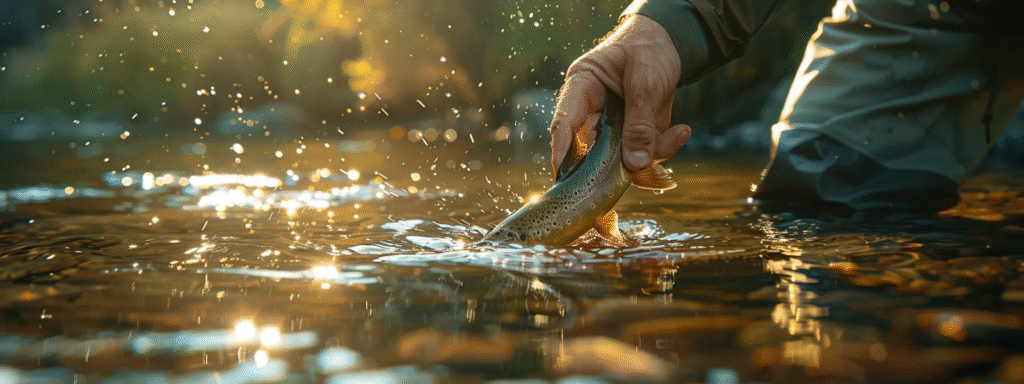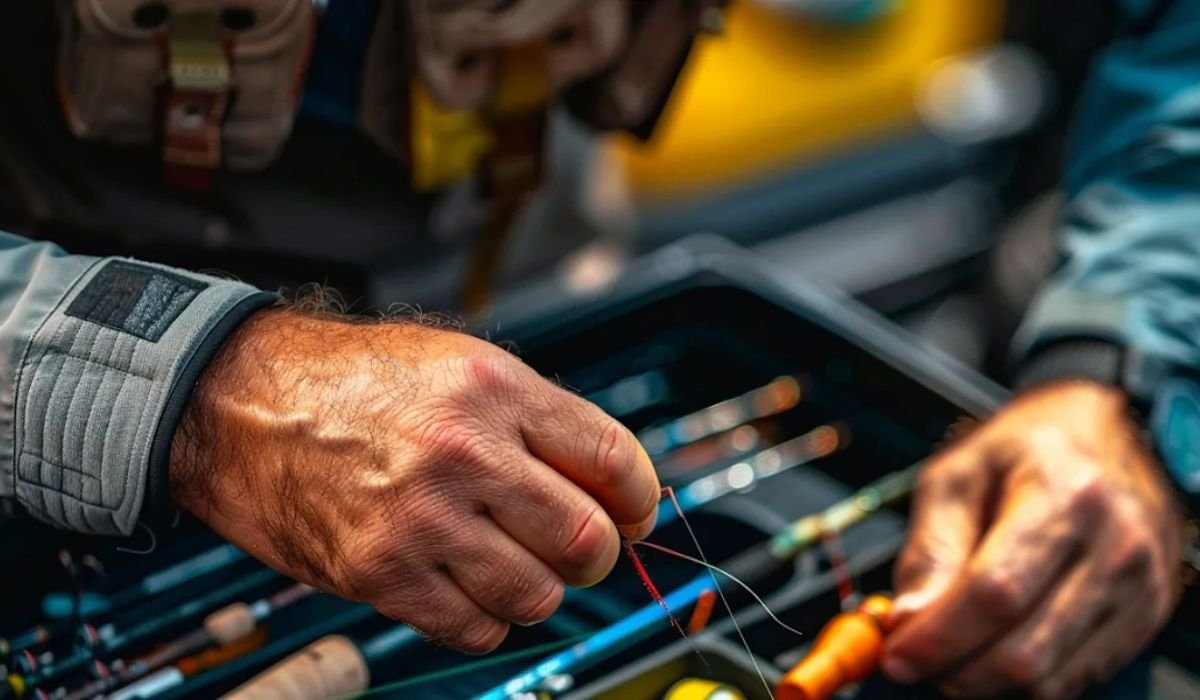Fly fishing is an ancient and refined method of angling, characterized by its unique technique and aesthetic grace. This sport goes beyond the act of catching fish—it’s almost a form of art, requiring skill, patience, and an understanding of the aquatic ecosystem. Anglers are drawn to the challenge of using hand-tied flies that mimic natural prey to captivate their target species. While steeped in tradition, fly fishing continues to evolve with advancements in gear and conservation efforts. Below, we explore the essentials of this captivating sport.
Understanding the Basics of Fly Fishing
Fly fishing is all about presenting a lightweight fly that mimics natural prey, using the line’s weight—not the lure’s—to deliver a smooth, precise cast. This technique allows for quiet presentations that keep fish calm. Anglers practice it in both freshwater and saltwater, targeting everything from trout and bass to tarpon and bonefish, each requiring its own strategy and gear, often starting with a quality fly tying kit.
The sport blends skill, patience, and observation. Understanding insect hatches, water movement, and fish behavior is key to success. Beyond technique, fly fishing offers a meditative escape—its rhythmic casting and close connection to nature make it as much an art form as an outdoor adventure.
READ ALSO: The Savvy New Yorker’s Guide to Salmon-Wrapped Sushi Order NYT
Essential Gear for Successful Fly Fishing
Fly fishing gear centers around five essentials: the fly rod, reel, line, leader, and tippet. The rod’s flexibility enables precise casting, while the reel balances the setup and manages line retrieval during a catch. The line, heavier than conventional ones, is color-coded for visibility and matched to the rod’s weight. A clear leader and tippet connect to the fly, allowing realistic movement in the water to entice fish.
Flies are meticulously hand-tied to imitate insects or small prey, with different designs for surface or underwater fishing. Anglers often craft their own using fly tying kits. Supporting gear like waders, vests, nets, and polarized sunglasses adds comfort, protection, and efficiency to every fly fishing experience.
The Art of Fly Casting Techniques
Fly casting distinguishes fly fishing from other angling styles through its emphasis on precision, rhythm, and control. Anglers form loops in the fly line using timed movements to deliver the fly naturally to feeding fish. The standard overhead cast uses a backcast to load the rod and a forward motion to present the fly. Variations like roll casting are useful in tight spaces, while advanced Spey casting enables long-distance presentations in wide rivers without much room behind the angler.
Consistent practice refines timing and accuracy, making instruction and repetition essential. Skilled fly fishers adjust their technique to account for wind, current, and other conditions. The satisfaction of a flawless cast, line unfurling smoothly in the air, defines the art of fly fishing.
Fly Fishing Environments and Target Species

Fly fishing offers diverse experiences across environments—from tranquil mountain streams to expansive saltwater flats—each requiring unique tactics and gear. Anglers must adapt their approach, whether making delicate presentations for trout in clear water or powering through coastal winds for tarpon. Success depends on understanding both the environment and the target species, selecting fly patterns, sizes, and colors that mirror local food sources while adjusting to shifting conditions throughout the day.
Seasonal changes greatly influence fish activity and location, with spring and fall favoring stream trout during insect hatches and tropical saltwater species thriving in cooler winter waters. Many anglers rely on experienced guides or mentors for insight on effective techniques, prime locations, and successful fly selections.
Conservation and Ethical Practices in Fly Fishing
Conservation lies at the heart of fly fishing, as the sport depends on thriving aquatic ecosystems. Ethical anglers act as environmental stewards by practicing catch and release, avoiding spawning areas, and using barbless hooks to minimize harm. They handle fish carefully, release them swiftly, and often join habitat restoration projects that address pollution, invasive species, and other ecological threats. These actions help ensure the sustainability of the waters they fish.
Fly fishers also embrace a broader code of ethics that includes respecting fellow anglers, following local regulations, and supporting communities sustained by fly fishing tourism. Through conservation programs and education, they deepen their connection with nature and reinforce a shared responsibility to protect it.
Overall, fly fishing is more than a mere pastime; it’s a celebration of nature, a testament to the art of angling, and an enduring tradition of ecological responsibility. Whether you’re casting your first line or you’re a seasoned angler, the sport offers endless opportunities for growth, discovery, and building a legacy of preservation and respect for the aquatic world.
YOU MAY ALSO LIKE: Calamariere: The Ancient Art of Squid Fishing You’ve Never Heard Of

